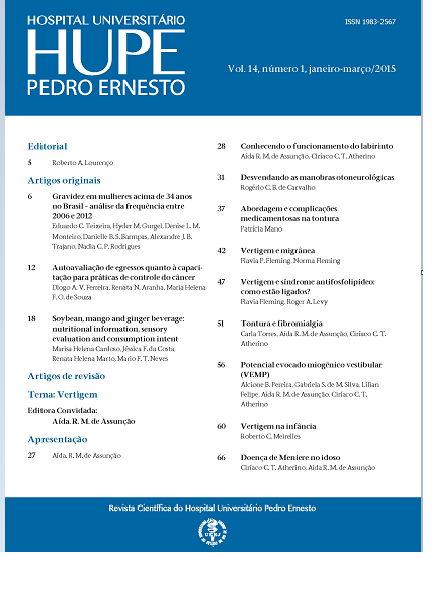Soybean, mango and ginger beverage: nutritional information, sensory evaluation and consumption intent
DOI:
https://doi.org/10.12957/rhupe.2015.16216Resumo
The consumption of soybean has been associated with beneficial effects on the state of human health. By associating mango and ginger with the water soluble soybean extract, a beverage endowed with good sensory qualities and good nutritional value is obtained. The objective of this work was to promote soybean as a healthy food among adolescent and adult patients of an university hospital by inviting them to sensory trials of a drink formulated with water soluble soybean extract, mango pulp and ginger extract. Other objectives were to establish the nutritional facts concerning this drink and survey the consumption intention of subjects. Two groups, each with 125 individuals, one consisting of adolescents and one consisting of adults, took part in this study by filling in a questionnaire. The results revealed that the beverage showed higher nutritional value than pure water soluble soybean extract, that it was more appreciated by adolescents than adults, and that its future consumption intention was higher among teenagers.
Keywords: Juices; Soybeans; Fruit; Mangifera; Ginger.
Revista HUPE, Rio de Janeiro, 2015; 14(1): 18-26
doi: 10.12957/rhupe.2015.16216


